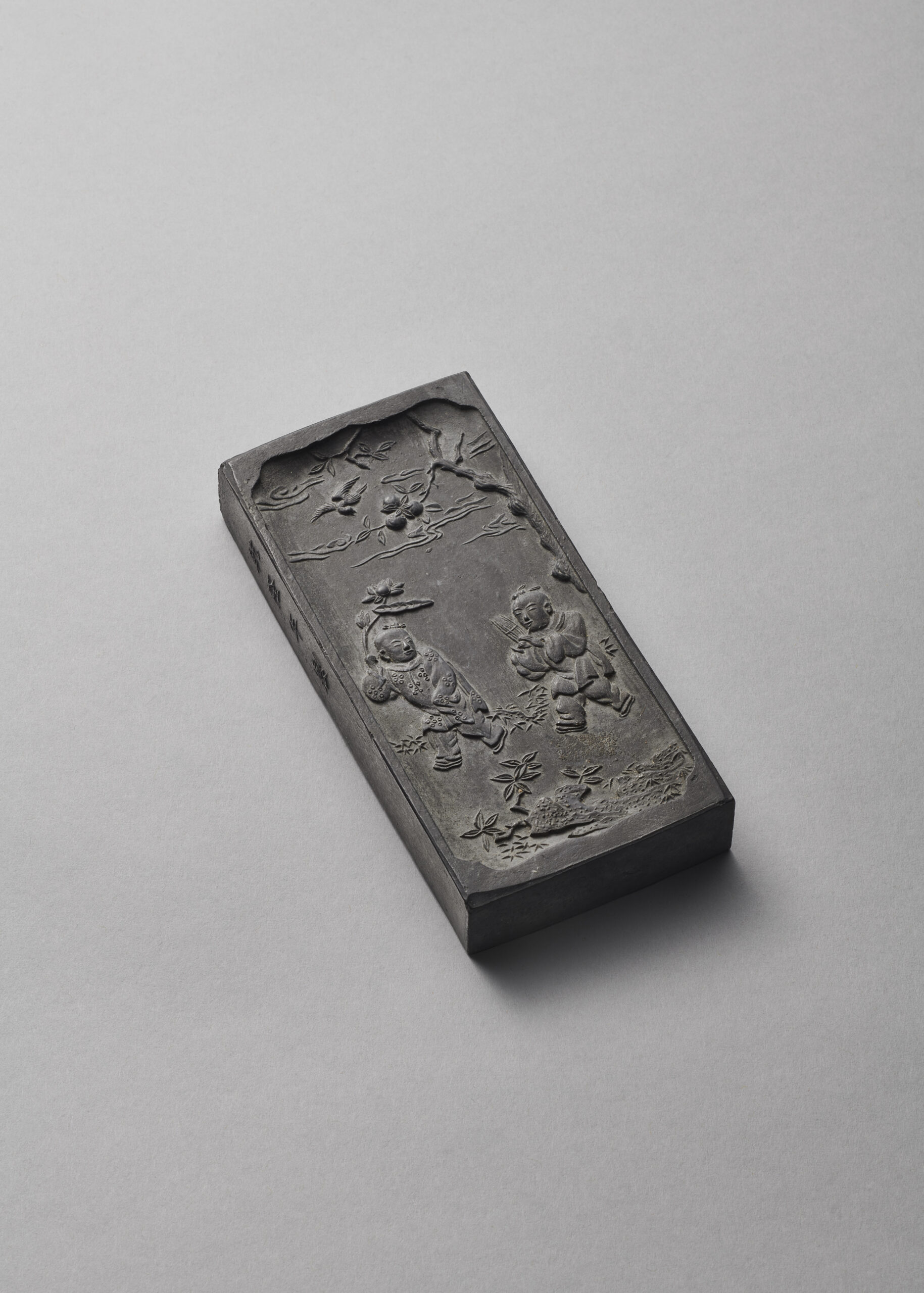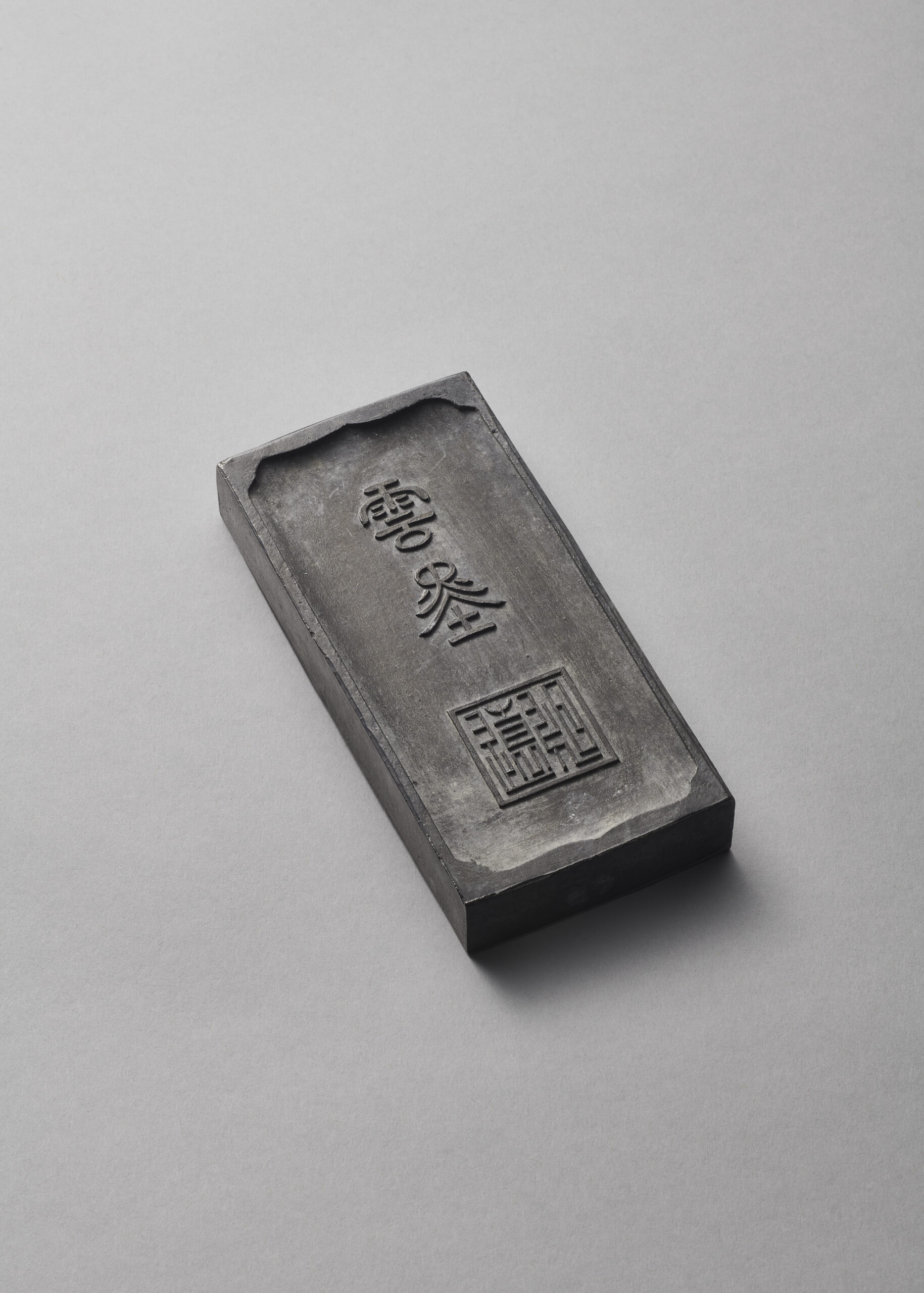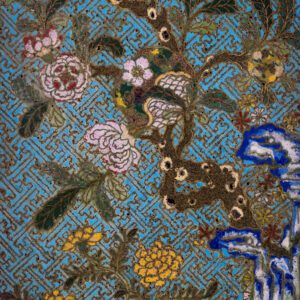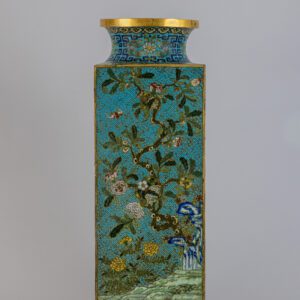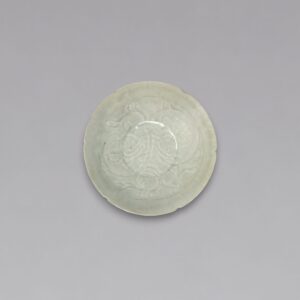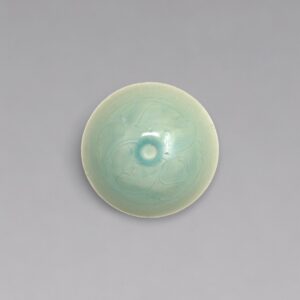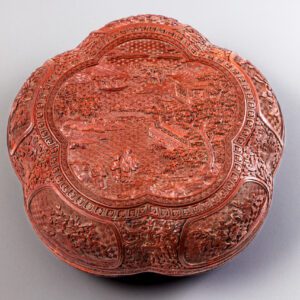The ink cake of rectangular shape, carved on one side with the two immortals Hehe Erxian depicted beneath a peach tree, the other side with the two characters yun mo, meaning ‘Cloud Ink’, above a seal. One of the sides is carved with a four-character Qianlong mark.
An inscribed ‘Hehe Erxian’ rectangular ink cake (Qianlong carved four-character mark and of the period, 1736-1795)
Description
Dimensions: 11.4cm long
Provenance:
The family collection of Ohno Sekisai, a calligrapher in Tohoku region of Japan, acquired around 1970s
Christie’s Hong Kong ‘The Imperial Sale’, 28 May 2014, lot 3586
A private Dutch collection
The ink cake of rectangular shape, carved on one side with the two immortals Hehe Erxian depicted beneath a peach tree, the other side with the two characters yun mo, meaning ‘Cloud Ink’, above a seal. One of the sides is carved with a four-character Qianlong mark.
During the Qianlong period (1736–1796) of the Qing dynasty, ink cakes reached a peak of refinement and artistry. These solid sticks of ink, made from soot and animal glue, were used by scholars and artists as the primary medium for writing and painting—ground with water on an inkstone to produce liquid ink. Beyond their practical function, Qianlong-era ink cakes were often elaborately moulded, carved, and gilded, reflecting both technical mastery and imperial patronage. The Qianlong Emperor’s passion for calligraphy and art inspired beautifully decorated ink cakes featuring auspicious motifs, poems, and imperial inscriptions, making them prized both as tools of scholarship and as luxury collectibles
